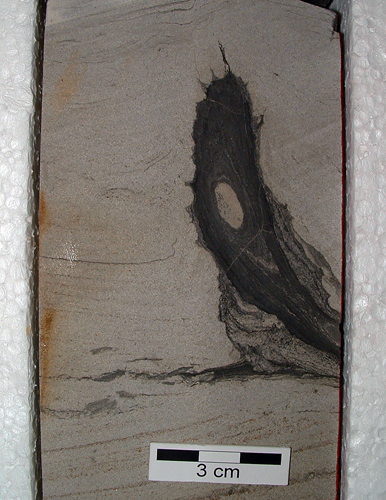
Rosselia

Rosselia is easily identified in core by the presence of a distinct mud ball surrounding a central shaft. The split core imaged above contains an excellent example. The dark colored mud ball is clearly visible and surrounds a central sand-filled shaft. Characteristic concentric rings of mudstone and siltstone within the mud ball are also visible . This Rosselia occurrence is found in shallow marine delta front sandstones.
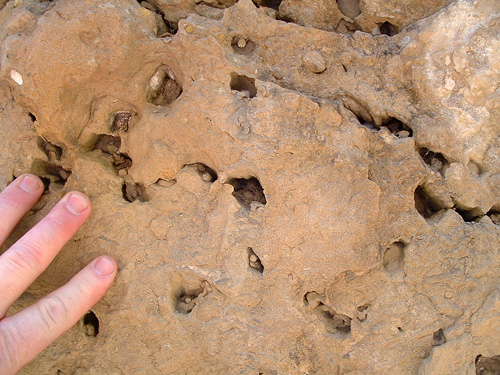
Multiple Rosselia socialis occurrences are found in this image looking down on and across the top of a bedding surface. The mudstone portions of the trace fossil have weathered away leaving voids around several central shafts. these occurrences are found in proximal shoreface deposits of the Cretaceous Panther Tongue located in Utah.
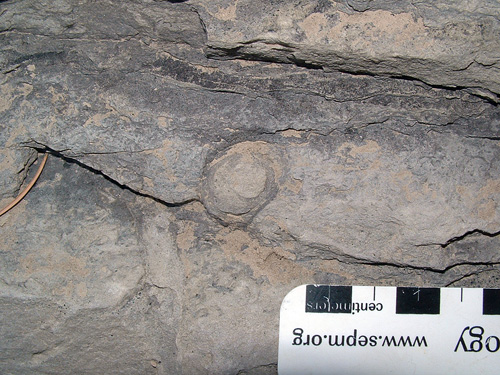
Rosselia occurrences are also found in basin distal Panther Tongue sandstones found outcropping in Utah. A sand-rich/mud-poor mud ball is shown in the middle of the image. Rosselia occurrences have only been found in ancient marine sediments - and thus, are an excellent indicator for discerning marine from non-marine depositional environments. Mud balls also found scattered across bedding planes.
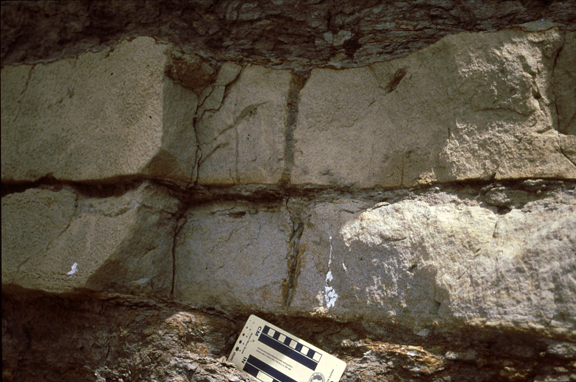
A re-equilibrating Rosselia occurrence is shown above. The two vertical shafts in the sandstone beds were produced by the same organism. Look closely and you can see the diagnostic upward flaring of the lower shaft into a mud ball at the top of the lower sandstone bed. A depositional hiatus that took place between emplacement of the sandstone beds was sufficient in length for the organism to produce a mud ball. In addition, finer-grained sediments found mantling the lower sandstone bed are also interpreted as relatively quiescent accumulation. The single trace-maker altered its behavior with changing sedimentation rates. This is indicated by the vertically stacked Rosselia occurrences. The trace-maker re-equilibrated (re-equilibrichnia) as a result of subsequent deposition of the upper sandstone bed.
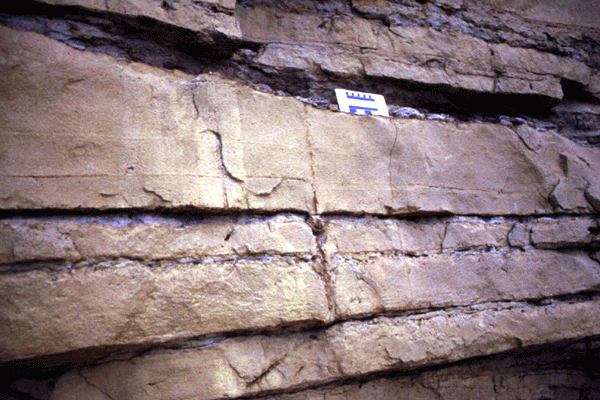
© copyright Chuck D. Howell, Jr. 2001-2022
No part of this website or any information contained may be used or reproduced without written permission from Chuck D. Howell. Figures and information may not be posted on other websites and/or publications. Proper citation is required.